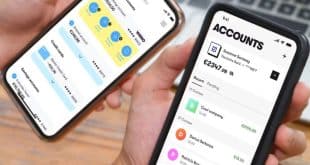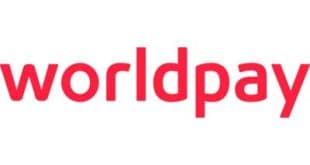E-Commerce
The Bill-Pay Horse Race
Peter Lucas
After years of lagging behind, bill-payment Web sites sponsored by financial institutions finally have achieved parity with biller-direct sites. But the outcome of the long-term race is still uncertain, given some compelling features billers’ sites retain.
After slugging it out for market share for more than a decade, so-called consolidator bill-payment Web sites have finally reached parity with biller-direct sites. During 2010, 43 million U.S. households paid their bills through billers’ sites compared to 42 million for consolidator sites typically offered through banks and credit unions, according to findings from Javelin Strategy & Research.
Fueling the consolidators’ gains are a combination of greater consumer comfort with paying bills through Web sites, a growing preference among consumers who pay their bills online to do so through a single site, and longer windows for initiating bill payment on a daily basis. Add in the fact that most financial institutions no longer charge for online bill payment, and all the ingredients for long-term success appear to be in place.
Indeed, Pleasanton, Calif.-based Javelin projects that 58 million U.S. households will pay their bills through financial institutions in 2015, compared to 51 million for biller-direct sites. That translates to a 6.6% annual growth rate over the next five years for consolidator sites compared to 3.8% biller-direct sites (chart, page 22).
But financial institutions would be wise to temper their enthusiasm. Biller-direct sites are not going away, and consolidators could have a tough time opening anything but a slight lead.
‘Actionable Information’
Two features direct sites offer that consolidator sites cannot or typically don’t are posting payment the same day to the customer’s account for free and the ability to pay bills using a credit card. Each is a huge incentive for consumers, especially in an uneven economy where they want as much flexibility as possible managing their monthly expenses.
“Consumers want more control over how they pay their bills electronically, and direct billers are inclined to give it to them because bringing consumers to their site opens up more marketing opportunities to sell additional services that can deepen the customer relationship,” says Mark Schwanhausser, a senior analyst who follows multichannel financial services for Javelin. “Consolidator sites are at the crossroads and need to deliver more value to give them a boost.”
Without a new value proposition, growth in the number of consumers using consolidator sites is likely to be slow. “With electronic bill payment having reached maturity, growth is flattening and there needs to be more innovation to maintain solid growth,” says Gidget Hall, group head of bill payment for MasterCard Inc.
Some of the ways financial institutions can add value to their electronic bill-payment services include packaging them with financial-management tools and offering person-to-person payments and features that appeal to small businesses.
Small businesses represent an attractive and relatively untapped market for electronic bill pay. Payments executives consider adding the ability to electronically generate and deliver an invoice to consumers via an e-mail message that includes a link to a bill-pay landing page a way to draw more small businesses into the bill-pay fold.
“A lot of small businesses can’t afford to electronically generate and present a bill. Providing electronic bill presentment with electronic bill payment increases the value of e-bill pay to small businesses and creates an opportunity for financial institutions to charge a fee for the service that is less than full-blown cash-management services,” says John F. “Jack” Prim, chief executive at Jack Henry & Associates Inc, a Monett, Mo.-based processor. “A lot of small businesses already use the same bill-payment application as consumers to pay their suppliers.”
Just as small businesses can benefit from features that help them better manage their finances, so too can consumers, according to bill-pay experts. Tools to set a budget, track spending on credit and debit cards, and generate alerts when a bill is due or a monthly spending limit is approaching are products providers believe consumers will readily embrace and pay for.
Banks and credit unions already are offering alerts in the burgeoning mobile channel. Pushing consumer alerts through mobile devices is expected to make bill pay more appealing, as most consumers are not comfortable using their smart phones for conducting transactions. Instead, consumers use the small, computer-like devices mostly to monitor their bank and payment card accounts.
“Delivering real-time information that consumers want about their personal finances is of value to them and can prompt an interaction with the bill-payment or online-banking site,” says David Munger, vice president of product management for Chantilly, Va.-based Online Resources Corp., a provider of payment gateways to billers and financial institutions. “The key is to deliver actionable information.”
‘Lukewarm’ on P2P
One form of bill payment that industry executives think will play well with consumers in the mobile channel is person-to-person (P2P) payments. Consumers could use a P2P application to send money to a child away at college and initiate small cash transactions, such as paying a baby sitter. Brookfield, Wis.-based processor Fiserv Inc. introduced a P2P application last July called ZashPay, which allows consumers to send money to an individual directly from a bank account (“Bill Pay Grows Up,” July, 2010).
ZashPay recipients receive an e-mail notifying them money is being sent and from whom. After clicking on a link in the e-mail, a recipient is linked to a secure landing page where she registers by entering her name, address, and bank-account information. Once registration is complete the funds are transferred and the recipient can automatically receive future P2P payments.
Payment experts contend that as more consumers try P2P applications they will be become more open-minded about using electronic bill pay. “We see P2P payments as being a good fit for mobile commerce and a viral marketing tool for e-bill payment,” says Bill Ready, president of Elizabethtown, Ky.-based iPay Technologies, a bill-pay provider. “Once consumers try a P2P payment they are likely to be inclined to try e-bill payment.”
Last June, Jack Henry acquired iPay for $300 million in cash. The acquisition of iPay, which services more than 3,600 banks and credit unions, gives Jack Henry a flexible bill-payment platform, according to Prim.
How fast consumers will jump on the P2P bandwagon remains to be seen. Online Resources dropped a P2P application after lukewarm consumer acceptance. “Even though P2P is a fit with e-bill, we are not entirely sold on it,” says Munger.
And despite being labeled as the next wave in e-payments, the mobile channel still has several hurdles to clear before going mainstream. Drawbacks include the limited size of smart-phone screens, which can make it difficult to view Web pages, and concerns about data security. While many mobile-commerce sites are addressing the former by creating Internet sites specifically formatted for mobile devices, the latter remains an issue.
Reports of smart phones picking up malware are occurring with greater frequency, according to Javelin’s Schwanhausser. Malware is a term for malicious software designed to infiltrate a computer while a consumer is visiting a Web site and gather keystroke data that can be used to perpetrate fraud or steal someone’s identity.
As such reports proliferate, concerns about m-commerce security heighten and consumers become more cautious about using smart phones to conduct transactions. “Financial institutions need to address the immediate security issue around mobile banking and bill payment and then drive home the idea that e-bill payment allows consumers to manage their finances more securely,” says Schwanhausser.
Once consumers are confident they can securely conduct bill-pay and online-banking transactions through their smart phones, financial institutions can take their security-marketing message to the next level by explaining that alerts about account activity add another layer of protection in personal financial management.
“Receiving an alert about a transaction on their credit card that does not fit their normal usage patterns is a way to detect potential fraud sooner,” adds Schwanhausser. “E-bill pay needs to be positioned more about accompanying services that can help consumers securely manage their finances rather than just convenience.”
Testing Fees
Whether consumers will pay for these types of value-added services is a question financial institutions intend to find the answer to soon. Thanks to recently enacted federal laws and new regulations, many banks and credit unions are reevaluating where they can generate fee income. Electronic bill payment is a seemingly logical choice.
When consolidated bill pay first appeared, financial institutions typically charged a fee for the service. But the fee proved to be a barrier, as many consumers did not see the value of the product when they could pay bills through biller-direct sites free.
Granted, doing so meant consumers had to go to multiple sites, but biller-direct sites offered more advantages, such as the opportunity to electronically review a bill, pay by credit card, and pay as late as the due date. Eventually, banks and credit unions dropped their fees to make their offerings more competitive.
“The testing of fees for e-bill payment through consolidator sites is expected as banks add more features to their e-bill-pay applications,” says MasterCard’s Hall. “The question is whether consumers will see the value of the offering justifying the fee. The service has been free for so long it may be hard to change the perception that it ought to remain so.”
Convincing consumers to pay for e-bill pay through their financial institution won’t be easy unless banks can offer same-day posting of a payment. While many banks offer same-day posting or expedited payments for a fee, they can only do so if they have a direct link to the biller. Otherwise, payment is made through the automated clearing house, which can take two to three days to clear.
Fees for expedited payments can vary by the type of bill. “We’ve seen banks charge fees ranging from $7.95 to as much as $14.95, depending on the type of bill,” says Erich Litch, senior vice president and general manager, consumer services, for Fiserv. “Mortgage payments tend to carry higher fees for expedited payments, but some banks will charge a flat fee.”
Consumers are willing to pay the fee for an expedited payment because it typically is less than the late fee they would be charged and it keeps a late payment off their credit report.
Nevertheless, the opportunity to pay on the due date free of charge through the biller often is more appealing to consumers. “The ability to make a last-minute payment is a big selling point for biller-direct sites,” says MasterCard’s Hall.
‘Holy Grail’
As consumers pay more and bills through consolidator sites—they pay an average of 14 regular bills monthly, including mortgage or rent to utilities and credit cards, according to Javelin—setting up direct links to each biller to allow expedited payment becomes a costly proposition for financial institutions.
Fiserv began addressing the issue in 2010 by introducing a same-day bill-pay service through wire-transfer provider MoneyGram International Inc. The service uses MoneyGram’s links to 100 billers, including mortgage and auto lenders, utilities, credit card issuers, and mobile-phone carriers.
“Expedited payment is something consumers want from consolidator bill-pay sites and that banks want to offer on a larger scale,” says Litch.
The ability to pay a bill using a credit card also is an option that banks want to offer but so have so far been frozen out of by billers. The reason is simple: billers do not want to pay interchange on a transaction they do not initiate, according to industry experts.
“Card acceptance is the holy grail of e-bill payment, but billers are loath to accept card payments through consolidator sites unless they originate the transaction,” says iPay Technologies’ Ready. “Cards are a popular way to pay on biller-direct sites because billers feel they can offset the cost of interchange by marketing more services to the customers.”
Card payments, which include credit, debit and prepaid, accounted for 23% of biller-direct payments in 2008, up from 11% in 2005, according to MasterCard. More recent figures weren’t immediately available. Visa Inc. and MasterCard have cut interchange rates for rental properties, utilities, and insurers in recent years to encourage those billers to push cards as a payment option.
Card acceptance also is attractive to billers because it allows them the opportunity to encourage consumers to sign up for recurring bill payment, which increases the likelihood their bills will be paid on time each month.
“Recurring payments billed to credit cards also eliminate the need to start the collection process for missed payments, which is an added expense,” says Online Resources’ Munger. “In many cases late payers are going to pay anyway.”
Getting Hooked
Despite efforts to make cards a more attractive payment option for billers, they still prefer to be paid through the ACH or through electronic funds transfer networks because of the lower expense compared to major-brand credit and debit cards. Online Resources, for example, leverages its direct connections to banks or electronic funds transfer networks to allow same-day positing.
“Aside from the comfort of real-time authorizations received when [accepting] credit cards, most [billers] still prefer ACH payment due to its lower cost,” Frank D’Angelo, executive vice president of payment solutions at processor Fidelity National Information Services Inc. (FIS), says by e-mail.
According to D’Angelo, biller-direct sites using Jacksonville, Fla.-based FIS’s bill-pay service generate 58% of their payments through the ACH, 41% on credit cards, and 1% via PINless debit. Annualized dollar volume through FIS-operated biller-direct sites is $29 billion for the ACH and $5 billion for credit cards. In October 2009, FIS acquired Metavante Technologies Inc., a big bill-pay provider.
Direct billers’ preference for low-cost payment options has prompted FIS to consider offering eBay Inc.’s Bill Me Later credit service as a payment option for its biller-direct clients, D’Angelo adds.
With consolidator and biller-direct sites in a dead heat in terms of market share, bill-pay experts predict that focusing on creating a smooth consumer experience, much as e-commerce sites do, will be the key to future growth for both banks and billers.
“The more compelling the user experience, the more likely consumers are to return to the e-bill-pay site,” says Fiserv’s Litch. “That’s something for banks to keep in mind because consumers usually get hooked after they use a bill-pay application three times. The challenge for banks is developing the features and functionality that will draw consumers to e-bill payment and keep them coming back.”






